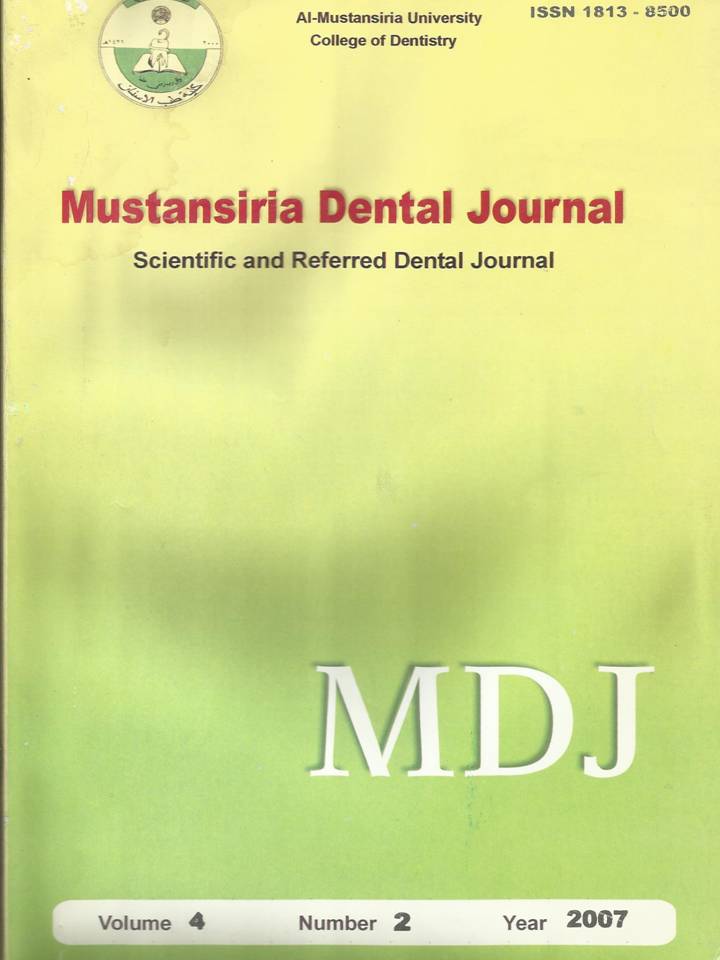The Effect of Bad Oral Habits on Malocclusions and Its Relation with Age, Gender and Type of Feeding.
DOI:
https://doi.org/10.32828/mdj.v4i2.597Keywords:
Key words: Bad oral habits, malocclusions, skeletal relationsAbstract
Background: The purpose of this study was to determine the type of bad oral habits "sucking (thump, index, more than one figure), nail or pencil biting, tongue thrusting, lip sucking" and its relation to age, gender, malocclusions and type of feeding (breast or bottle), in patients above the 6 years of age.
Material and methods: 110 patients of oral habit reported to the department of pedodontics and preventive dentistry and department of orthodontics at the collage of dentistry \ Baghdad University, during a one year period (2005-2006), Thos were 35 male and 75 females in age range between 6- 13 years.
Result: Thumb sucking represented the predominate habit (34.55%) for all age groups, The age group that showed the highest oral habit was 8-9 years in which (35.45%) children had oral habit, female children (68.18%) were more than male, the children who sucked their thumb were more likely to develop an increased over jet, while the anterior open bite mostly seen in children with tongue thrust, The children who suck their lip showed deep bite and an increased in the over jet.
Conclusions: oral habits had dental effect rather than skeletal effect, there was no association between oral habit and pattern of child's feeding.
Downloads
Published
Issue
Section
License
The Journal of Mustansiria Dental Journal is an open-access journal that all contents are free of charge. Articles of this journal are licensed under the terms of the Creative Commons Attribution International Public License CC-BY 4.0 (https://creativecommons.org/licenses/by/4.0/legalcode) that licensees are unrestrictly allowed to search, download, share, distribute, print, or link to the full texts of the articles, crawl them for indexing and reproduce any medium of the articles provided that they give the author(s) proper credits (citation). The journal allows the author(s) to retain the copyright of their published article.
Creative Commons-Attribution (BY)









